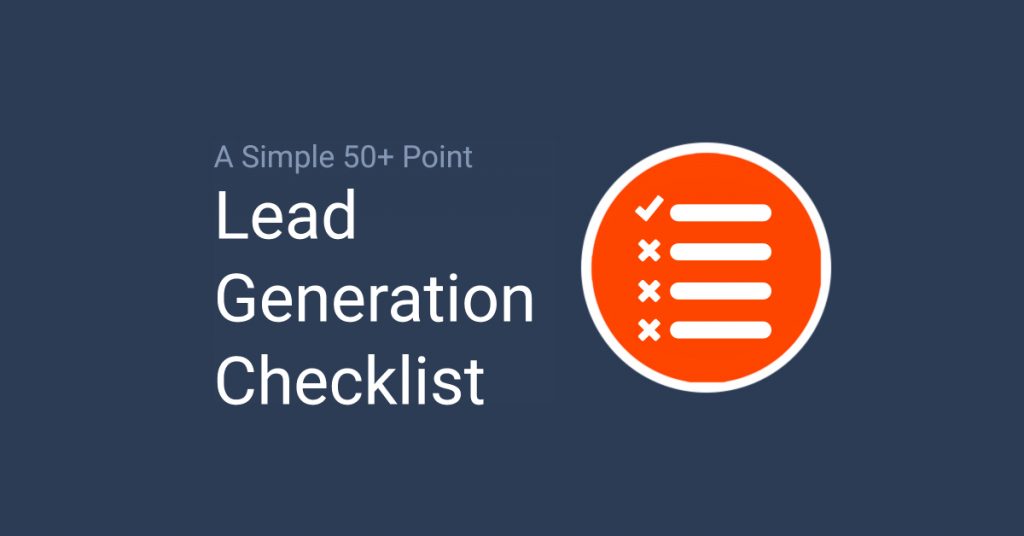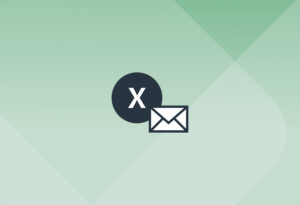The goal of a business website is to create more leads for the company.
It’s a pretty easy concept to understand, but succeeding in consistent lead generation can be hard.
Sometimes you may find your lead gen efforts have grown old and ineffective. Or maybe you haven’t even launched your campaign yet and are not sure where to start.
That’s why we’ve put together this handy lead generation checklist to help.
But first:
What is Lead Generation?
Lead generation is a marketing practice best described as the process of identifying and pursuing potential customers for a business product or service.
The goal is to attract and turn (convert) prospects into customers. Some examples of types of lead generation are job applications, blog posts, coupons, live events, and online content.
Now you know what lead generation is, let’s jump into using the checklist:
Lead Generation Checklist
If you feel like your business has hit a wall with lead generation, check out this checklist for generating more (high quality) leads. With just a few simple changes to your website and content, you should be able to start generating leads.
Want a copy of this checklist in an interactive Google sheet template? You can grab it here.
Check it out the lead generation checklist below:
Goals and Objectives
Setting the right goals and objectives is a key part of any campaign or project, and lead generation is no exception.
To make sure you get the most from your lead gen, here are some things to think about:
- Determine if you want to measure the quantity or quality of leads (or both)
- Set your lead generation goals based on what your bigger business goals are
- Make sure to communicate your goal to your team (and motivate them to reach it)
- Setup tracking to measure the progress of your goal
Sidenote: Website Setup
Before you go any further, you need a website obviously that is optimised for handling any leads. Make sure you’ve picked the right CMS (like WordPress), added links to your social media channels and you have CRM software in place to handle your lead data.
Landing Page
A landing page is a web page a visitor lands on for specific purpose. It down to this page to get all the information to move leads further down the sales funnel.
Here are some things to consider for having an effective landing page:
- Make sure your landing page has a clear CTA (call-to-action)
- Focus on the customers viewpoint
- Include an effective headline
- Use a clean and simple design
- Show of your social status
Lead Magnet
A lead magnet is something of value offered by a landing page in exchange for an email address or useful information about a possible customer. Some examples include: guides, reports, eBooks, case studies, checklists, courses and infographics.
Here are some characteristics of a good lead magnet:
- Solves a real problem your target market has
- Helps the prospect achieve something quickly
- Be specific in what you are aiming to achieve
- Be simple and easy to understand
- Create something high value that people actually want
- Make sure it is easily accessible for everyone
- Don’t forget to demonstrate your expertise in your lead magnet
Traffic
Having goals, a landing page and lead magnet are pointless if no one is coming to your website. You need to get online visitors to your site.
Here are some inbound marketing channels to consider:
- Blog – create useful content for your audience, answer FAQs and provide useful resources (more info on creating useful content below).
- Social media – (e.g. LinkedIn, Twitter, Pinterest, Google+, SlideShare, and YouTube).
- Pay-per-click Ads – (and remarking)
- SEO (organic search) – make sure your site is SEO ready to benefit from traffic from search engines
- Email marketing – create high quality emails and an email funnel for leads. Speaking of funnels…
Email Funnel
An email funnel is an automated chain of email messages which guide a prospect towards a desired action (without annoying them). The goal of an email funnel is to help form a relationship with a lead that converts them into a paying customer.
Here’s what you need to know when setting up an email funnel:
- Choose the right email marketing software
- Set up a lead generation form to handle lead capture
- Create a sequence
- Connect form to sequence
Content Plan
Everyone knows websites need good content on them. But before you rush ahead and start filling your website with blog posts, it is worth putting together a content plan.
Here are some tips for doing so:
- Target audience personas and their needs.
- Understand any industry issues.
- Write about content that will attract people to your site
- Use formats people want to see. Remember, content isn’t just blog posts, but can be checklists and videos
- Decide on a publication frequency (e.g. weekly or monthly)
Lead Nurturing
Once you’ve converted visitors into leads, you want to nurture these into sales. Lead nurturing is a way to form a connection with a lead so you can build trust until they are ready to buy.
Here are some things to consider to make sure you generate customers from leads:
- Email marketing (consider what type of content to send them and how often)
- Use automated follow-up workflows and emails.
- Use lead scoring (for example by behaviour or by demographics).
- Define your audience and segment
- Offer valuable content in your lead nurturing emails for free
- Set objectives and goals for each email you send
- Develop a timeline for your lead nurturing emails
- Make sure to evaluate your success and optimize accordingly
Campaign Management
One of the most important parts of lead generation is staying organised. Campaign management is making sure everything runs smoothly.
Make sure to:
- Check campaign content (to include up to date and accurate information)
- Have a social media promotion schedule in place
- Have an email promotion schedule.
- Setup an online advertising schedule (e.g. blogs, Google AdWords, LinkedIn
- Ads, Retargeting etc).
- And don’t forget about any offline promotions like direct mail or industry magazine articles.
Measuring Lead Generation
Knowing what is (and what isn’t) working with your lead generation is vital for having a successful campaign. Remember: the goal of measuring your lead gen efforts is to be able to confidently decide how to best scale your lead generation efforts in the future.
Here are some things to consider measuring:
- Website visitors by source (i.e. direct, organic search, paid search,
- social media, email, offline).
- Leads (website registrations) by source.
- Customers by source.
- Conversion rates.
- Content performance.
- Customer acquisition cost.
- Revenue numbers with attribution
Further Resources
To use alongside this checklist, here are a few more free business resources you can use:
- Business planning and financial templates by Score
- Store locator page design inspiration by Storemapper
- Landing page examples by Landingfolio
- A collection of marketing spreadsheets by Sheets for Marketers
- Startup tools to help run your business by StartupBros
Summary
There you have it, everything you need to know for a successful lead generation campaign.
If you’re looking for a way to increase the efficiency of your lead gen and stay ahead of competitors, you might want to look into automating your business with Mailparser.
Want to get started now? Sign up for a free subscription!


